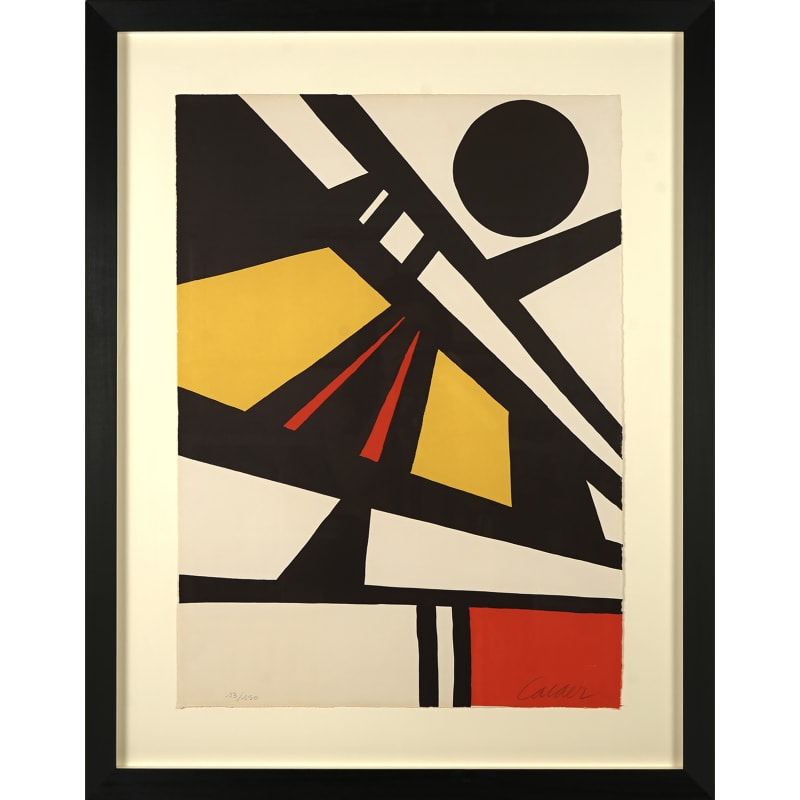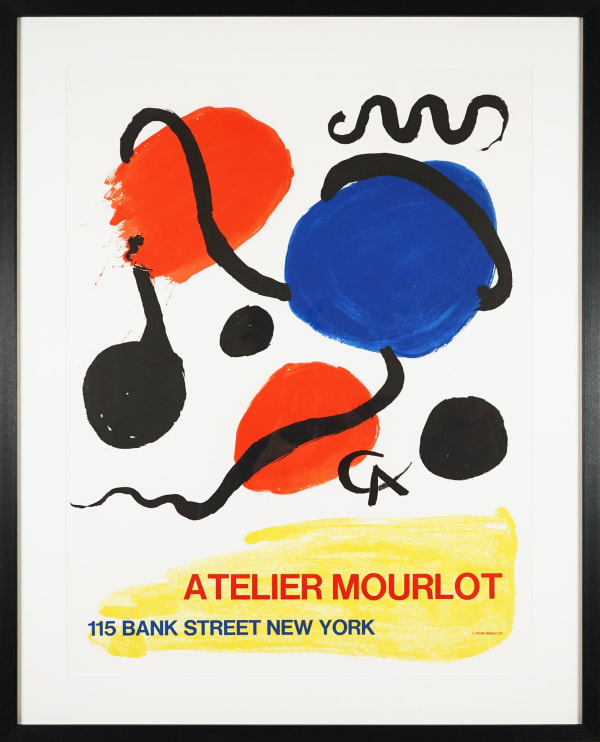Alexander Calder
"To an engineer, good enough means perfect. With an artist, there's no such thing as perfect".
With his hanging 'mobiles', Calder revolutionised sculpture and introduced the concept of kinetic art. His rich body of work - including paintings, prints, drawings, mobiles and non-moving 'stabile' sculptures - is now considered among the most important in 20th century art. Towards the end of his career he became an avid creator of lithographs, many of which refer explicitly to his sculptural work. They have become extremely sought-after and capture wonderfully the radical joy of this revolutionary artist.
Born to artist parents, Calder's creative endeavours were encouraged from an early age; at eight years old he began to maintain his own workshop. At the age of 11 in 1909, he presented his parents with two of his first sculptures as Christmas presents: a tiny dog and a duck cut from a brass sheet and bent into shape. He designed the duck to rock back and forth when tapped, an early hint at the revolutionary mobiles that would secure his legacy decades later.
He initially pursued a different path to that of his parents, but after obtaining a degree in mechanical engineering from Stevens Institute of Technology in 1919, he returned to art, moving to New York in 1923 to enrol at the Art Students League. At about this time he also took a job as an illustrator for the National Police Gazette, which sent him to observe and sketch performers at the Ringling Bros. and Barnum & Bailey Circus for two weeks in 1925. This was to spark a lifelong passion for the circus that would resurface regularly in his work.
After moving to Paris in 1926, he created Cirque Calder, a complex assemblage of miniature performers fashioned from wire, leather cloth and other found materials. Manually manipulated by the artist, he would hold regular performances lasting for up to two hours which become popular with the Parisian avant-garde. His experience with this project soon led to the creation of portraits made with wire, which led to his first solo exhibition in New York in 1928.
As his reputation grew he become friendly with many prominent artists, including Joan Miró and Marcel Duchamp. A visit to the studio of Piet Mondrian in 1930 was to have lasting ramifications. The sight of a wall of coloured cardboard rectangles that Mondrian used for compositional experiments spurred Calder towards abandoning figurative art in favour of total abstraction. The following year he would create his first truly kinetic sculpture.
These sculptures - christened 'mobiles' by Duchamp - are among the earliest examples of work that abandoned the traditional notion of art as a static object. Early examples featured motors to drive the movements of the sculpture, but Calder soon embraced the idea of allowing wind and the motion of the atmosphere to provoke random permutations of the work once installed.
Later in life Calder's interest in lithography resulted in the production of numerous vibrant lithographs that explore the same spatial dynamics and sense of rhythm as his sculptures.




